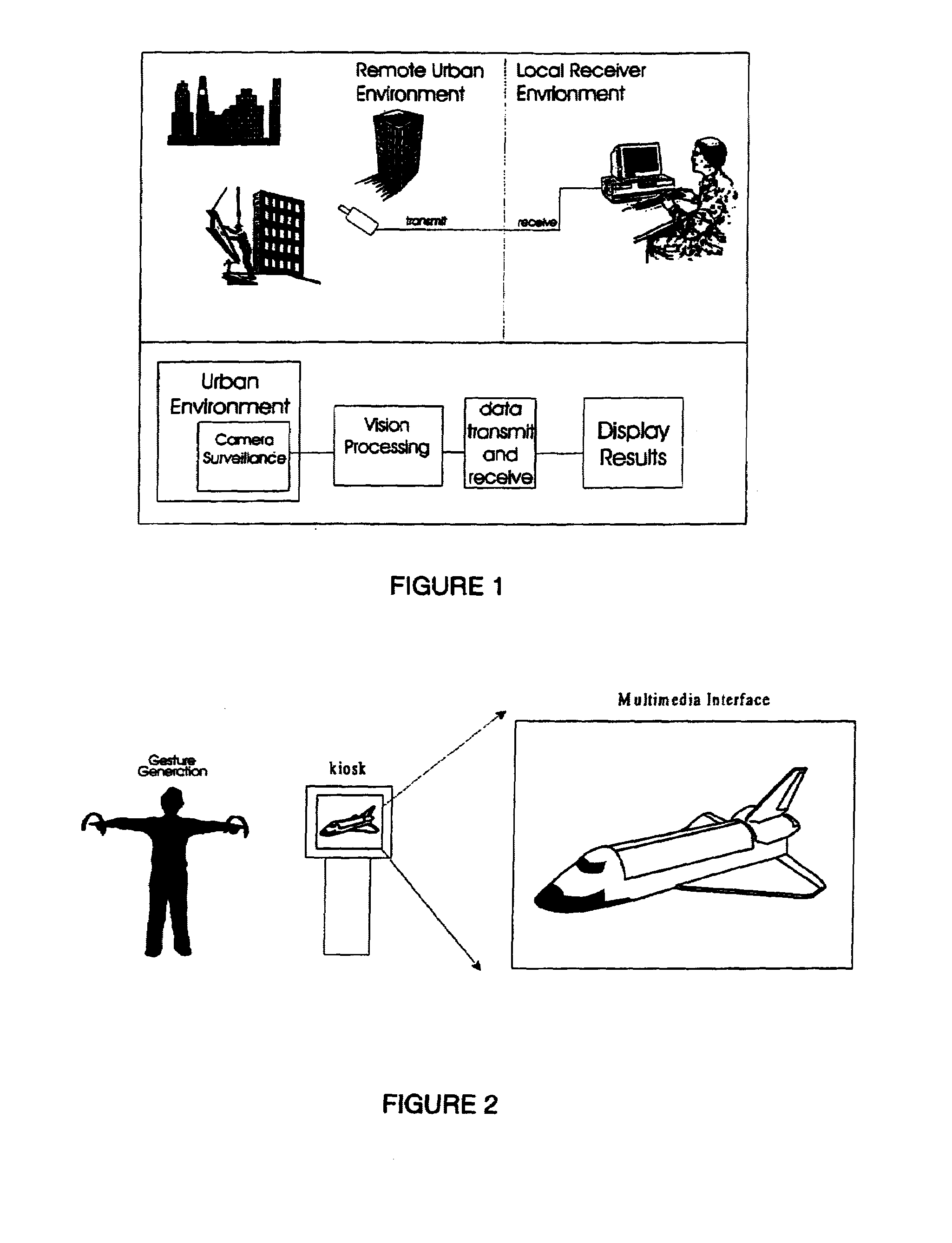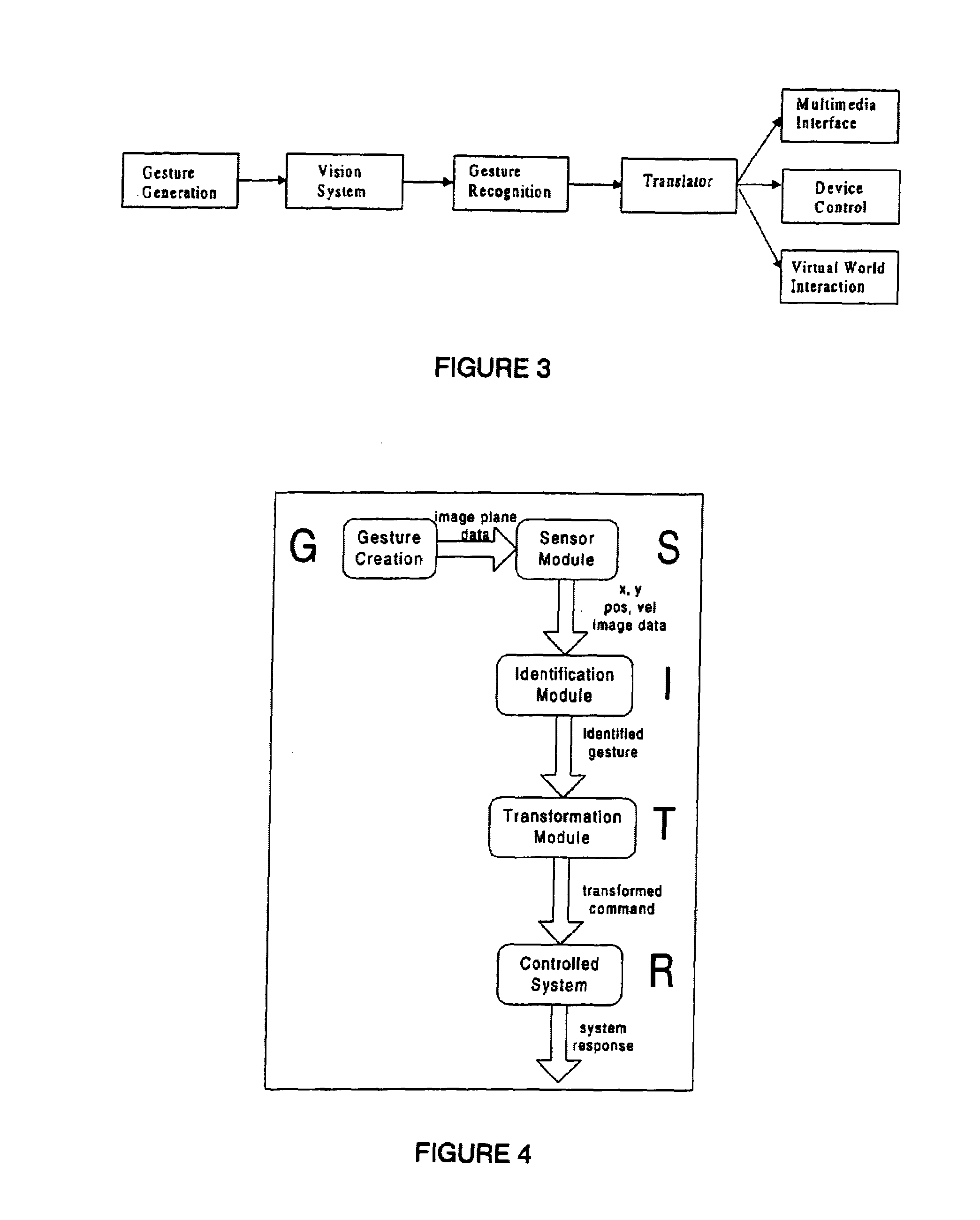Behavior recognition system
a behavior recognition and behavior technology, applied in the field of automatic image recognition, can solve the problems of insufficient development of “behavior recognition” systems, tedious and costly tasks, and difficulty in distinguishing between normal human activity and suspicious behavior
- Summary
- Abstract
- Description
- Claims
- Application Information
AI Technical Summary
Benefits of technology
Problems solved by technology
Method used
Image
Examples
Embodiment Construction
[0054]The core of the behavior recognition system is a set of dynamic and static gesture recognition modules. This section details the overall gesture recognition system used by the behavior recognition system.
The Gesture Recognition System
[0055]FIG. 2 presents a system overview of a gesture controlled self service machine system. FIG. 3 shows a flow chart representation of how a vision system is views the gesture created, with the image data sent to the gesture recognition module, translated into a response, and then used to control a SSM, including the display of data, a virtual environment, and devices. The gesture recognition system takes the feature positions of the moving body parts (two or three dimensional space coordinates, plus a time stamp) as the input as quickly as vision system can output the data and outputs what gesture (if any) was recognized, again at the same rate as the vision system outputs data.
[0056]The specific components of the gesture recognition system is ...
PUM
 Login to View More
Login to View More Abstract
Description
Claims
Application Information
 Login to View More
Login to View More - R&D
- Intellectual Property
- Life Sciences
- Materials
- Tech Scout
- Unparalleled Data Quality
- Higher Quality Content
- 60% Fewer Hallucinations
Browse by: Latest US Patents, China's latest patents, Technical Efficacy Thesaurus, Application Domain, Technology Topic, Popular Technical Reports.
© 2025 PatSnap. All rights reserved.Legal|Privacy policy|Modern Slavery Act Transparency Statement|Sitemap|About US| Contact US: help@patsnap.com



